[Paper Review] WIDER FACE : A Face Detection Benchmark
WIDER FACE : A Face Detection Benchmark
Yang, Shuo, et al. “Wider face: A face detection benchmark.” Proceedings of the IEEE conference on computer vision and pattern recognition. 2016.
Abstract
-
논문에서 현재의 face detection 성능과 현실에서 필요로 하는 것 사이에는 격차가 있음을 보여줌
- 새로운 face detection dataset을 제시 : WIDER FACE
기존의 dataset보다 10배 크고, 많은 annotations을 포함(occlusions, poses, event categories, face bounding boxes)
- 대표적인 detection systems에서 벤치마킹하여 SOTA 성능을 제공하고 많은 scale 변동을 다룰 수 있는 해결책 제시
Introduction
-
Face detection : 주어진 임의의 이미지에서 이미지내에 사람의 얼굴이 존재하는지 존재하지 않는지 판단하고, 존재한다면 각각의 위치와 범위를 반환
- 최근 연구는 시각적으로 큰 변화가 있는 상황(the unconstrained scenario)에 대한 face detection에 focus를 둠
public datasets(FDDB, AFW, PASCAL FACE)은 detection이 발전하는데 많은 원동력이 되었지만 아직 더 challenging한 datasets이 필요
-
기존 datasets은 제한된 상황만 다룰 수 있어서 real-world에 적용하기 힘들고 크기가 작음(a few thousand faces)
- contributions
1) WIDER FACE : large-scale face detection dataset 제시(393,703개의 face가 labeling된 32,203개의 이미지로 구성)
기존 가장 큰 detection dataset의 10배 크기, 매우 다양한 상황을 다룸 (fig1)
2) 제안한 multi-scale two-stage cascade framework에서 WIDER FACE를 사용한 것을 보여줌
3) 대표적인 4개의 algorithms에 벤치마킹함
실패원인도 분석
WIDER FACE Dataset
- 3.1.Overview
-WORIDE FACE dataset은 가장 큰 face detection dataset (2019 기준, WIDER dataset에서 추출한 이미지들)
-32,203개의 이미지로 이루어져 있고, 총 393,703개의 label이 존재 (scale, pose, occlusion과 같은 다양한 변수 상황을 다룸)
-60개의 event class로 이루어짐
-랜덤으로 선택하여 training/validation/test 각각 40/10/50
- Scenario-Ext
다른 dataset으로 학습을 하고 WIDER FACE로 testing
- Scenario-Int
WIDER FACE로 학습을 하고 WIDER FACE로 testing
- 3.2.Data Collection
- Annotation policy
-인식할 수 있는 모든 얼굴에 bounding box를 labeling
-PASCAL dataset과 비슷하게 화질이 좋지 않거나 너무 작은 pixels(10 pixel 이하)은 ‘Ignore’ flag 지정
-더 나아가 pose(typical,atypical), occlusion level(partial, heavy)에 대한 annotation도 있음
- 3.3.Properties of WIDER FACE
- Overall
-WIDER FACE dataset은 기존에 존재하는 dataset보다 더 challenging함
-three levels of difficulty : Easy, Medium, Hard (EdgeBox의 detection rate를 기준)
- Scale
three scales : small(between 10-50 pixels), medium(between 50-300 pixels), large(over 300 pixels)
- Occlusion
-face detection 성능을 평가하기 위한 중요한 요소
-three categories : no occlusion, partial occlusion(1-30%), heavy occlusion(over 30%)
- Pose
출처 : https://upload.wikimedia.org/wikipedia/commons/5/54/Flight_dynamics_with_text.png
two deformation levels : typical, atypical (either the roll or pitch degree is larger than 30-degree or the yaw is larger than 90-degree)
- Event
-WIDER FACE는 총 60개의 event를 포함하고 있음
-각 event가 face detection에 끼치는 영향력을 평가하기 위해 3가지 factor로 특징화 시킴 : scale, occlusion, pose
-event class에 대한 detection rate를 각 factor 별로 계산하여 순위를 매기고, 그것을 기준으로 3가지로 나눔 : easy(41-60 classes), medium(21-40 classes), hard(1-20 classes)
Multi-scale Detection Cascade
multi-scale two-stage cascade framework 제안
- Multi-scale proposal
-face classification과 scale classification을 위해 fully convolutional network의 집합(4개의 network)을 공동으로 학습
-face size별로 4개의 categories로 나눔
-각 network를 경계값 scale size의 image size로 학습(만약 1번째 network라면, image size는 30 pixels)
positive samples : image patch의 center를 face에 맞추고, scale class labels 지정(table2 참고)
negative samples : patch를 random으로 crop하고, patch의 IoU 값을 계산하고 0.5 이하이면 scale class 값을 -1로 설정하고 해당 patch는 더 이상 학습과정에 영향을 주지 않음
- Face detection
-이전의 stage에서 예측된 windows를 걸러냄
-이전 stage과 동일한 CNN 구조를 사용하여 face classification과 bounding box regression을 공동으로 학습 (input size도 동일)
-Face detection : ground truth와 IoU 값이 0.5 이상이면 positive level (아니면 negative)
=> cross-entropy loss 사용
-Bounding box regression : 각 proposal들 중 ground truth와 가장 가까운 위치로 예측 (proposal이 negative이면 output vector [-1,-1,-1,-1]로 설정)
=> Euclidean loss 사용
Experimental Results
- 5.1.Benchmarks
-대표적인 detector categories의 4가지 분야에서 각각 하나의 algorithm을 선택 : VJ, ACF, DPM, Faceness
-3.1에서 말한 Scenario-Ext 적용 (외부 dataset에서 학습하고 WIDER FACE에서 test), PASCAL VOC의 evaluation metric 사용
- Overall

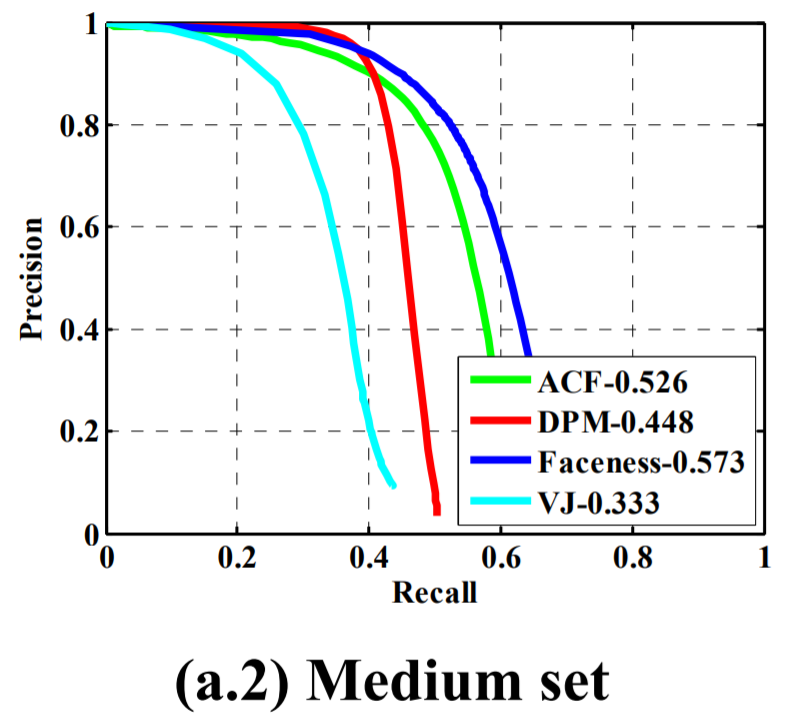
-3개의 subset에서 Faceness는 다른 방식들을 뛰어넘는 성능을 보임
-성능은 빠르게 감소하여 모든 방식들이 30 AP보다 낮은 성능을 보임
-실패 원인을 파악하기 위해 다양한 data subsets에서의 성능을 분석
- Scale
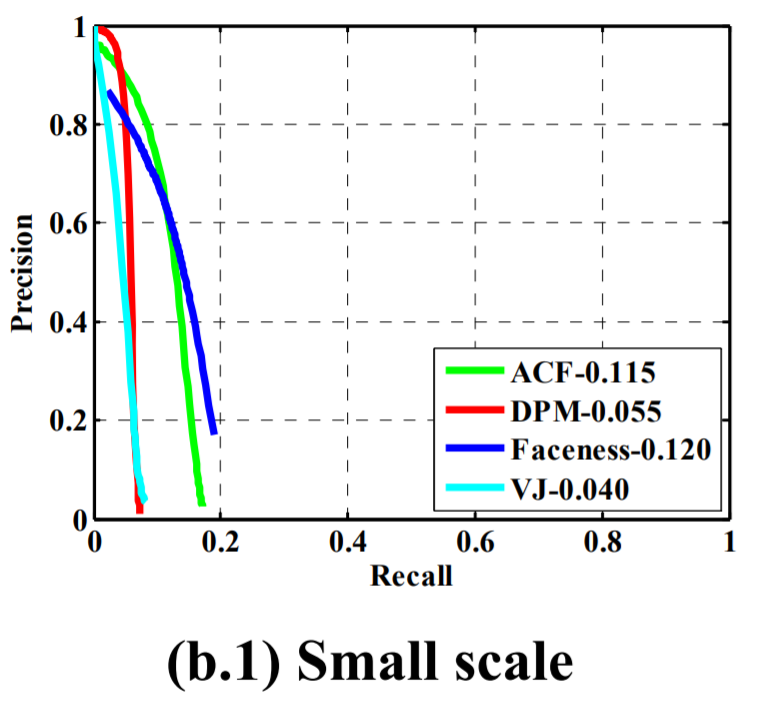
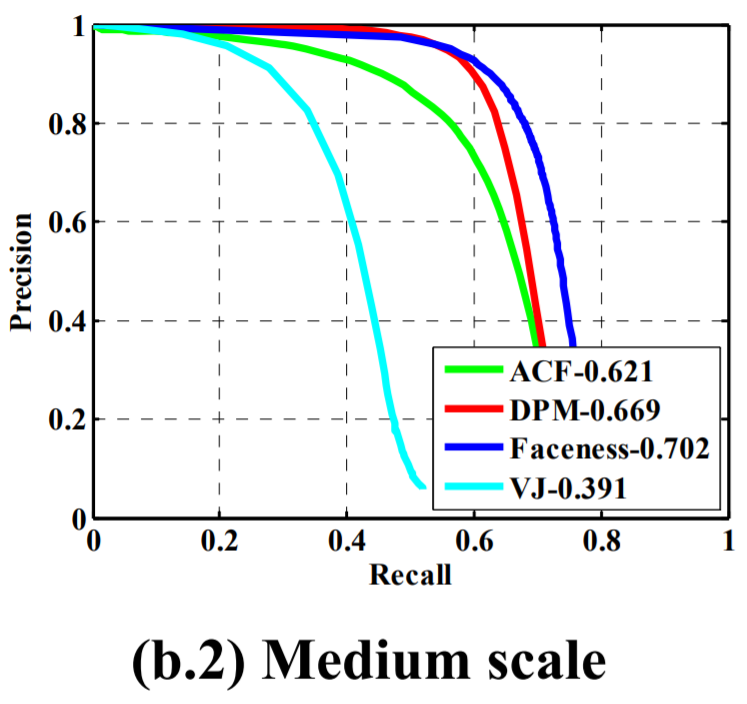
-small scale에서 12 AP 보다 좋은 성능을 낸 algorithms이 없음
=> 기존의 face detectors는 small scale을 잘 다루지 못함
- Occlusion
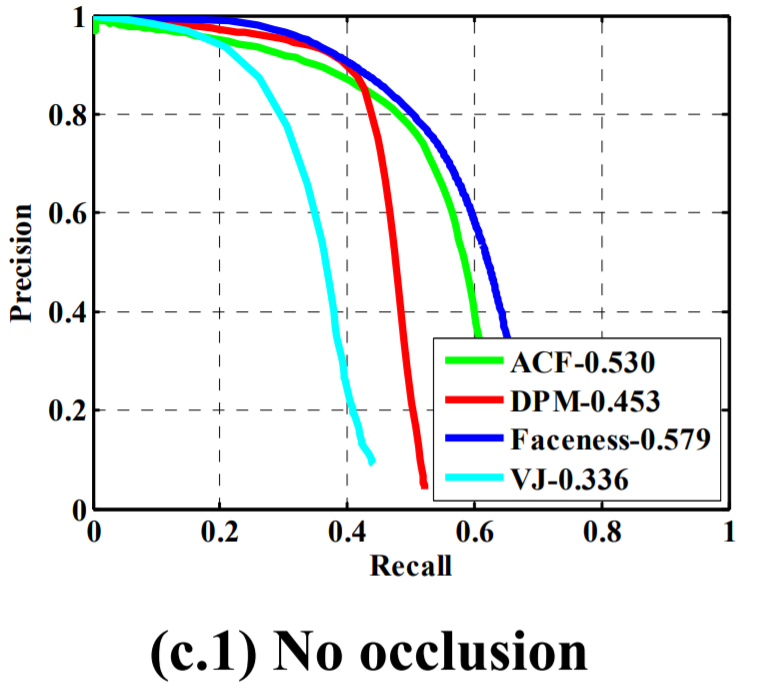

-가려진 얼굴을 detection 하는 것은 모든 face detector의 주요 성능 지표임
-part based models인 Faceness와 DPM은 다른 방식들에 비해 occlusion을 더 잘 다룸
- Pose
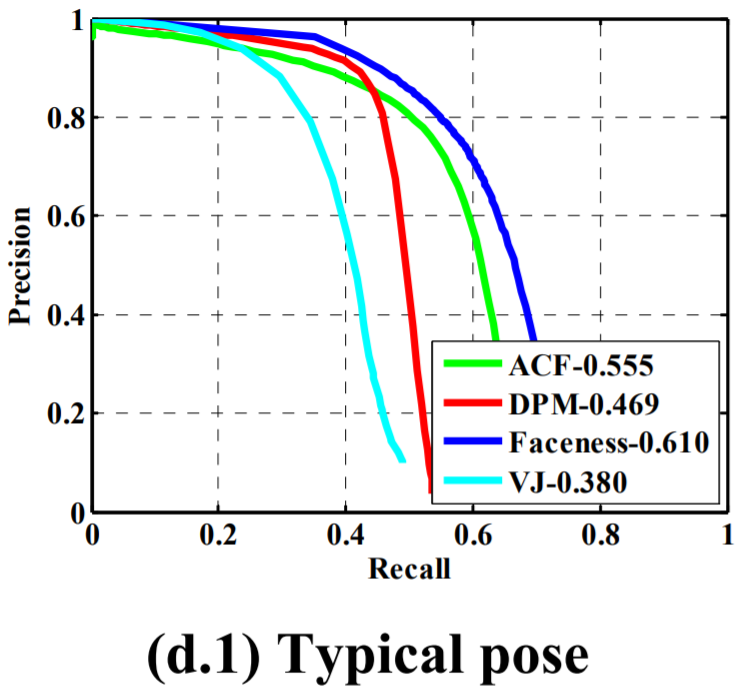
- 5.2.WIDER FACE as an Effective Training Source
ACF와 Faceness에 Scenario-Int 적용 : WIDER FACE로 학습시키고 WIDER FACE testing set으로 test
- 5.3.Evaluation of Multi-scale Detection Cascade
-제안한 multi-scale cascade algorithm의 효과를 평가
-ACF-WIDER, Faceness-WIDER models과 다르게 Two-stage CNN 기반 baseline 설립 (multiple face scales을 다룸)
-WIDER Hard subset에서 Faceness 보다 8.5% AP 향상된 결과를 얻음
=> single network는 multiple scales을 다루는데 어려움이 있음
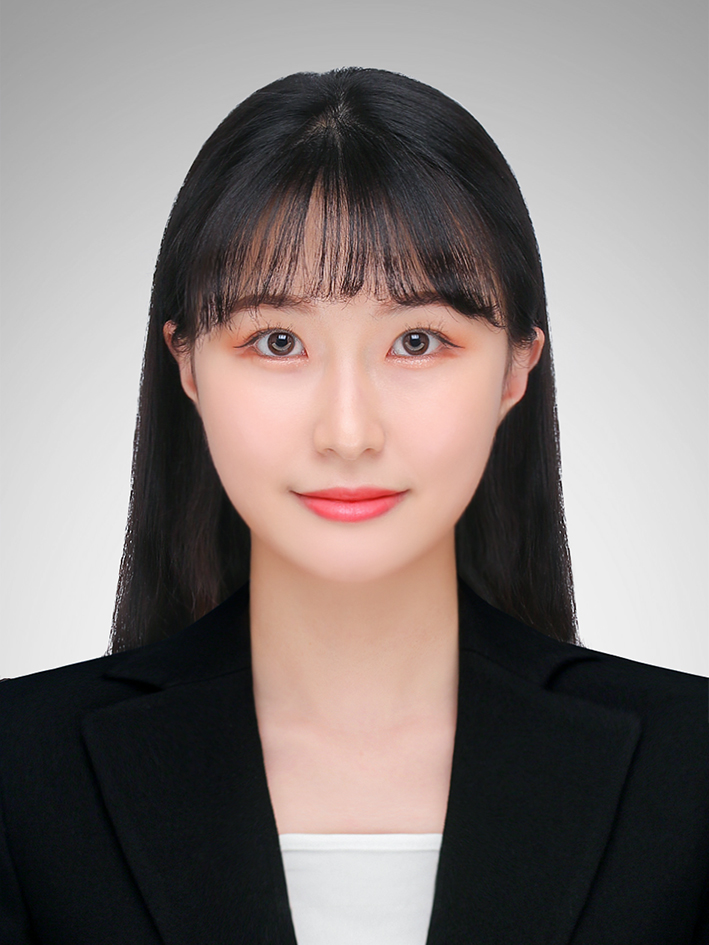
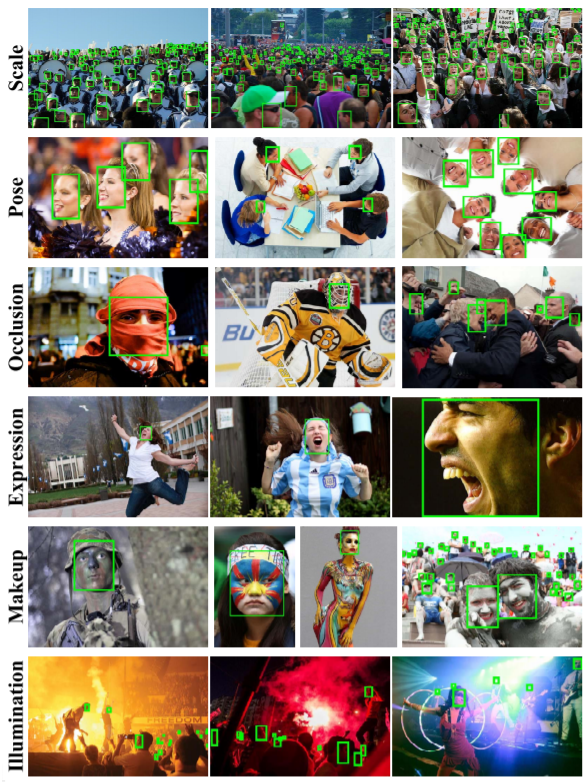

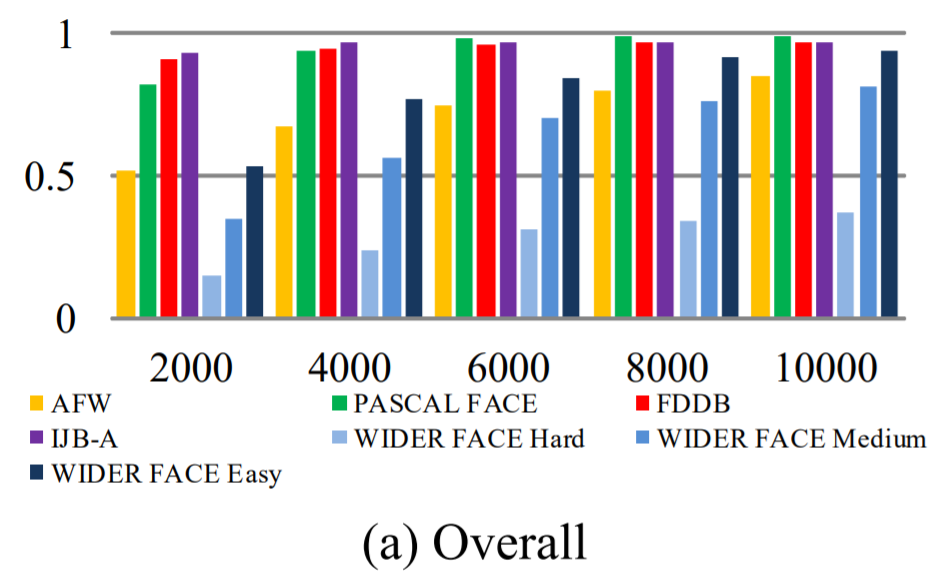
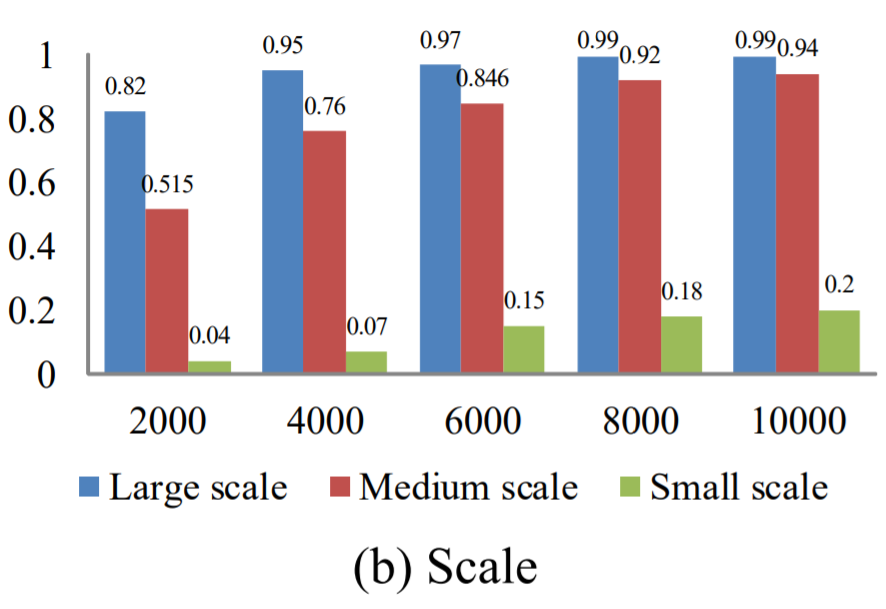
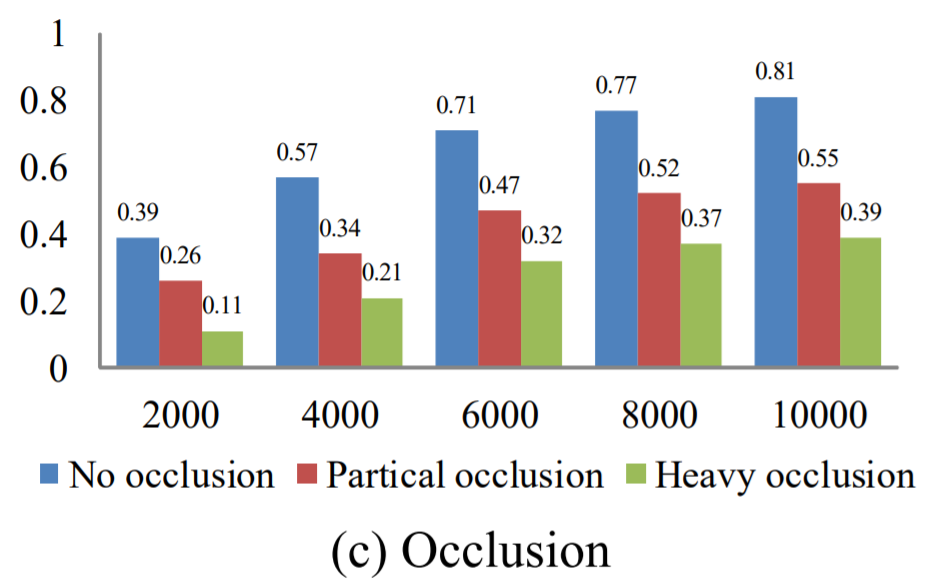
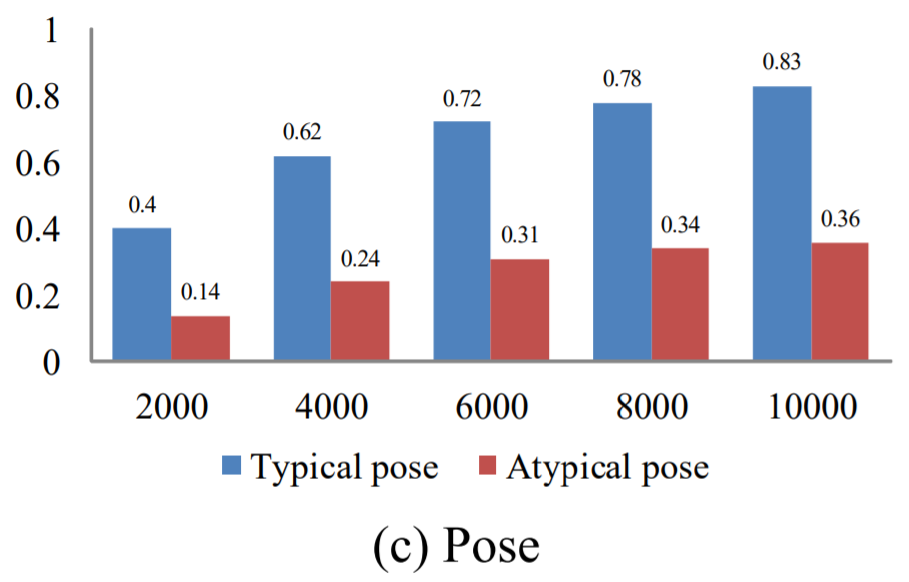


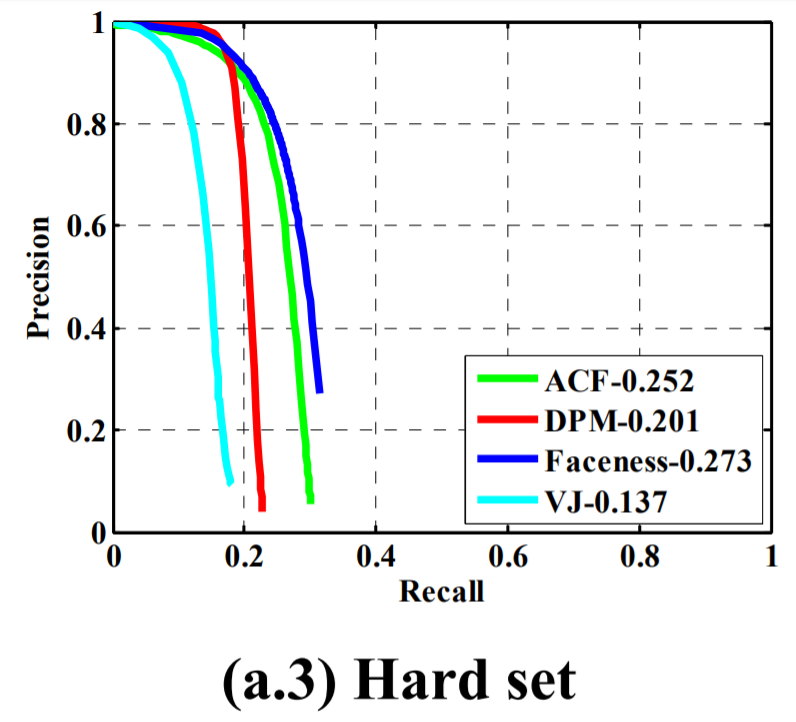

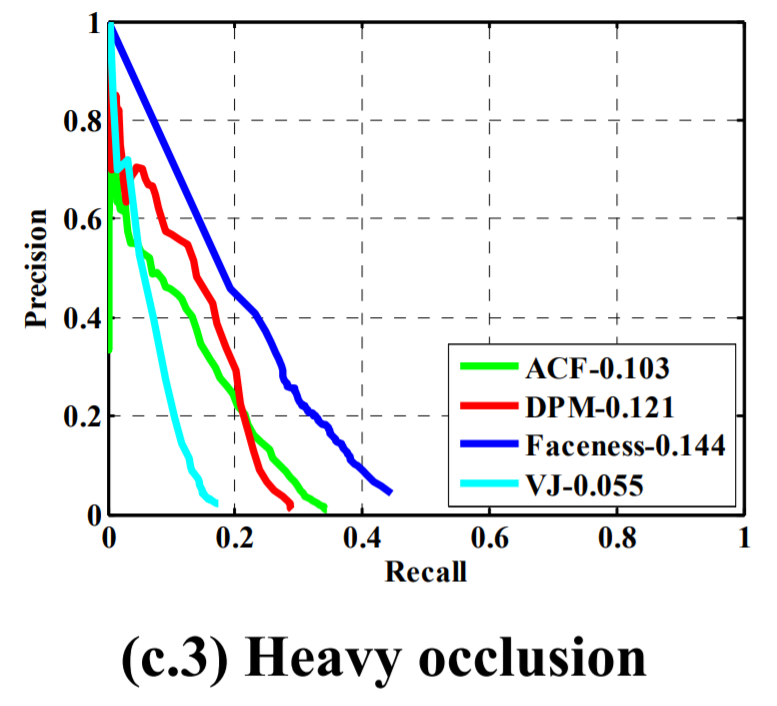
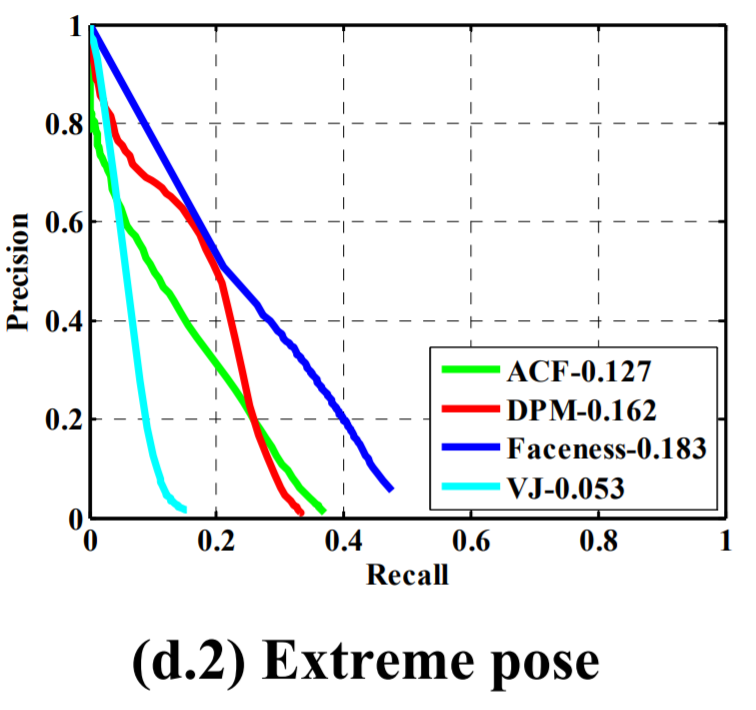
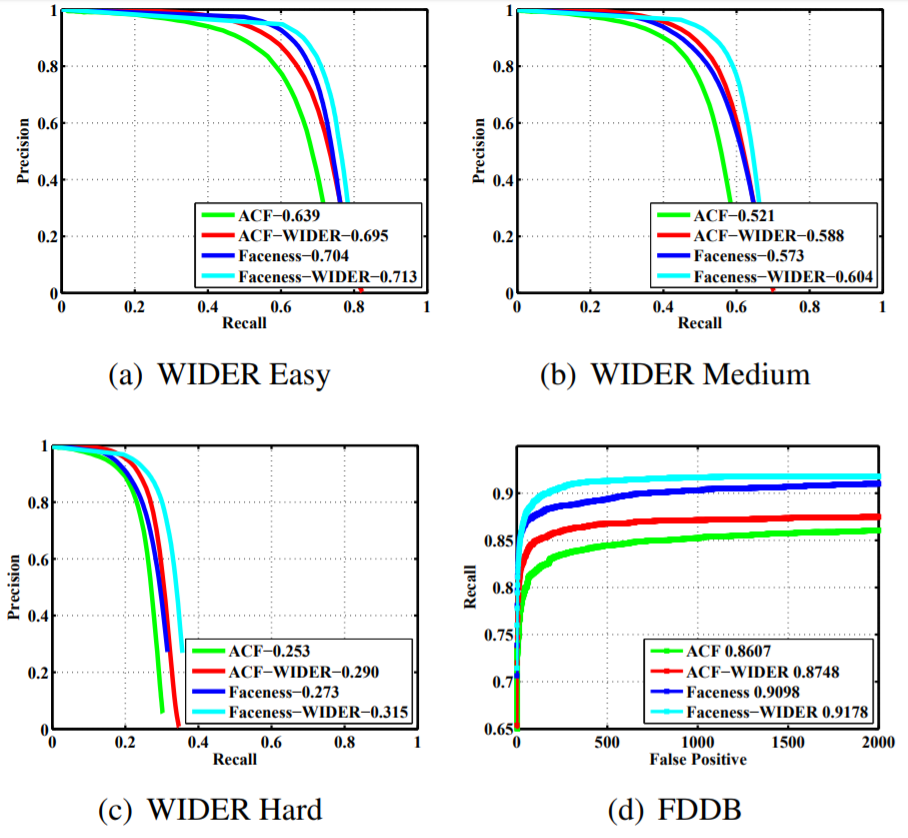

Leave a comment